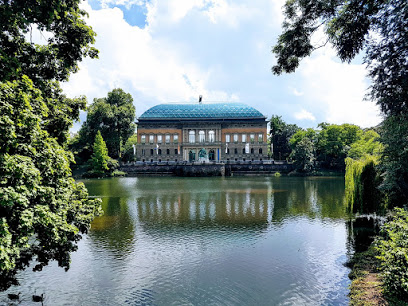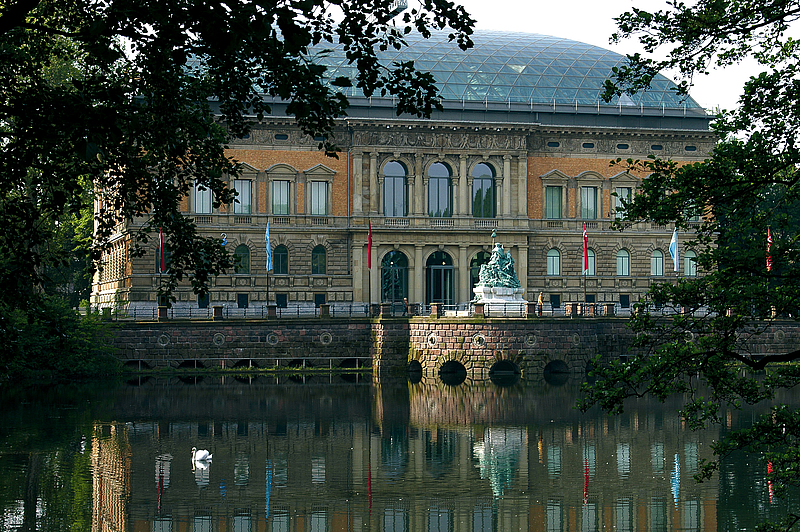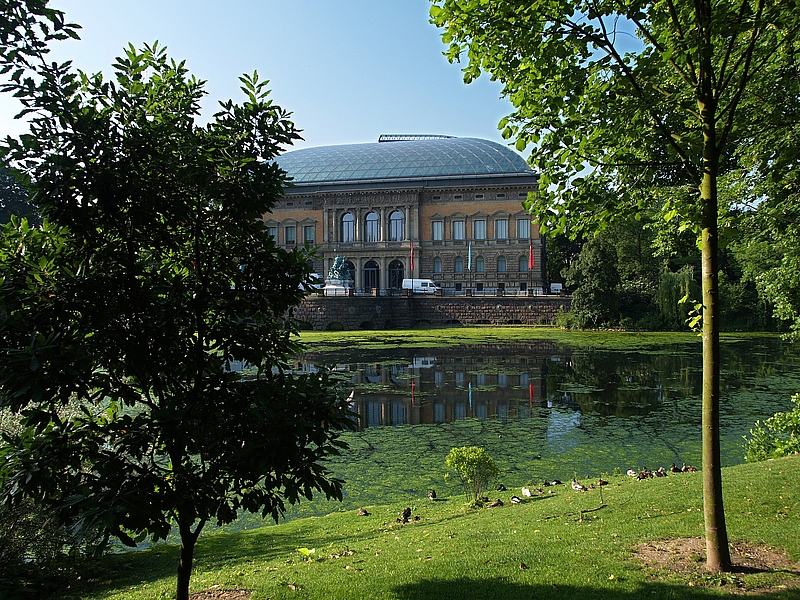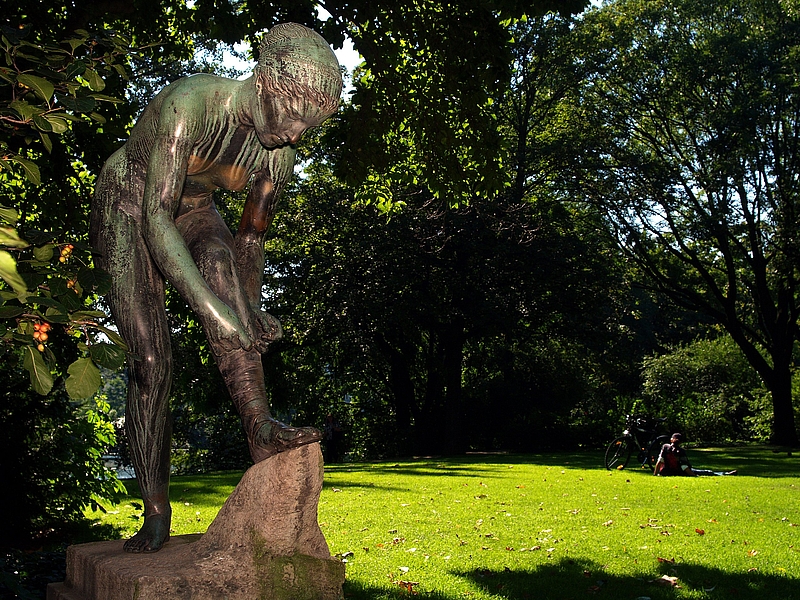The 6-hectare park by the Ständehaus is a semi-natural green oasis in the middle of Düsseldorf and a great spot to relax and unwind. The winding paths beneath the tall trees provide sudden glimpses of the city skyline on the horizon, of the Ständehaus and of the tranquil water. It is easy to forget that the Kaiserteich and Schwanenspiegel ponds are also part of a running stream: the southern Düssel runs through here, before passing beneath the Haroldstraße to the Spee’scher Graben and finally disappearing at the Stadtmuseum where it flows via a canal into the Rhine.
A walk through the city from Graf-Adolf-Platz, passing by the Schwanenspiegel and along the Spee’scher Graben to the Stadtmuseum, has historic dimensions. The route follows the former boundaries of Düsseldorf’s fortifications and reveals the extent of the wall and moat system, which was designed to protect the city centre. In the peace treaty of Lunéville in 1801, it was decided to tear down the fortifications. Far-sighted city planners took advantage of the demolition and with Napoleon’s authorisation used the area to create parks and gardens. The renowned garden architect Maximilian Weyhe cleverly integrated the remainders of the fortification system into today’s park by the Ständehaus and at the Spee’scher Graben, and created a green promenade. For its inclusion in the European Garden Region EUROGA 2002plus, the park by the Ständehaus was extensively restored according to the original designs from 1819.






